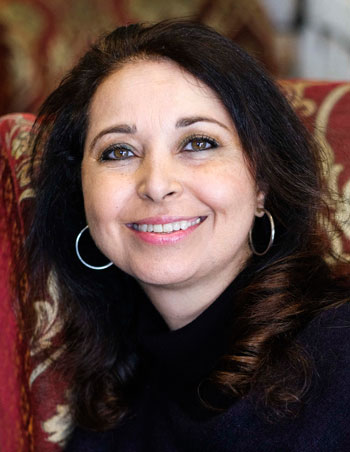 ED: Where does professional distance become professional compassion? UWA’s A/Prof Nahal Mavaddat explores the issue.
ED: Where does professional distance become professional compassion? UWA’s A/Prof Nahal Mavaddat explores the issue.
There is growing evidence that practitioner empathy and its behavioural correlate, compassion, improve patient health outcomes and the benefits are significant.

Studies suggest that with an empathetic approach, patients accept their medical diagnoses more readily, have improved mental health and a reduction in pain.
Studies also show that patients have improved blood sugar control, lung function, wound healing and physical rehabilitation, as well as a reduced duration of the common cold, length of intensive care and hospital stay, and risk of mortality.
Practising empathy can therefore no longer be considered a soft skill for doctors, but rather a scientific, evidence-based partner with clinical competence in delivering quality health care.
Empathy is more than sympathy, which is simply feeling sorry for another. It is a shared feeling of another’s pain, which frequently leads to a compassionate action to alleviate that pain.
The journalist Daniel Pink famously said that: “Empathy is about standing in someone else’s shoes, feeling with his or her heart, seeing with his or her eyes.”
It can help a doctor gather better diagnostic information; improve patients’ recall of instructions thereby improve medication compliance; patients are more motivated to make lifestyle changes; and there’s a lowering of patients’ psychological and physical stress with a beneficial physiological flow-on for the nervous and immune system.
Studies also show empathic and compassionate doctors also make fewer medical errors. Just a few words at the beginning and the end of a consultation can make a huge difference to the lowering of patients’ emotional distress and pain and improve clinical practice.
There’s also benefits for doctors. Even small acts or words of compassion for patients on a daily basis can counteract the burnout that results from the sometimes overwhelming experiences of providing patient care.
Empathy has been thought of as being a hard-wired personality trait. Now, however, it is more often viewed as a cognitive skill that can be learnt. Trials including those involving medical students and doctors suggest that empathy may indeed be taught to health professionals.
We are, in fact, biologically hard-wired for empathy.
In the 1990s neuroscientist Giacomo Rizzolatti, at the University of Parma in Italy, discovered, while working on bonobo monkeys, ‘mirror neurons’ primarily in the premotor and parietal cortex of our brains.
These neurons fire up when we perform an action or experience pain or touch, and also, importantly, fire up when we observe these in another person – thus mirroring the experience of the other triggering feelings of empathy.
At the University of Western Australia, a Medical Humanities Network of teachers and researchers has been established to promote and research the human side of medicine including the study of empathy.
An undergraduate major in Health Humanities, in which an empathic approach to healthcare is taught, has also commenced this year through the School of Allied Health at UWA for those planning to go on to one of the health professions.
Medical or Health Humanities – fields complementary to medical and allied health studies – combine the arts, literature, creative writing, philosophy, law and other humanities disciplines to help balance the teaching of science with the art of medicine. The aim is to create more empathic and balanced doctors and allied health professionals.
One technique with a growing evidence-base is that of ‘object-based learning’ – attentively looking at objects, observing and then reflecting without judgment. At UWA, a collaboration with the Lawrence Wilson Art Gallery has given medical and health humanities students a chance to attend gallery sessions designed to improve their powers of observation and empathy.
Empathy may also be developed through experiencing stories of patients by using creative art (a painting, a piece of music, a verse of poetry, a chapter of a fictional story) to promote powers of deep listening and acceptance. ‘Depth of Field’, a pictorial series of patient images on each of the areas of ageing, stroke and mental health created at UWA, helps students develop these skills through the visual narratives of patients’ stories.
Another emerging method is the use of a range of models of immersive experiences that range from blindfolds and 3D glasses, to reality suits or virtual reality simulators that mirror the experience of being in the skin of patients, especially those with a disability – for example, simulating the experiences of a blind person or someone who has survived a head injury or stroke.
Knowing their benefits, we can all as doctors strive to be empathic and compassionate in our daily interactions with patients. Knowing that these skills can be learnt and taught is encouraging!
For an excellent overview of the role of empathy and compassion in health care. – see Trzeciak and Mazzarelli. Compassionomics: The Revolutionary Scientific Evidence That Caring Makes a Difference 2019, Studer Group.
ED: Dr Nahal Mavaddat is Associate Professor, Division of General Practice, School of Medicine UWA

